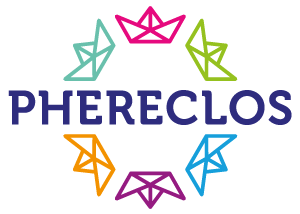Inspiring Future
- Portugal,National practice
- 2014

| Time frame | |
| Categories | |
| Level of Schools | |
| External Partners | |
| Type of Schools | |
| URL | |
| Number of Schools involved | |
| Number of Schoolheads involved | |
| Number of Teachers involved | |
| Number of Students involved | |
| Number of Parents involved | |
| Number of External Partners involved |
The project “Inspiring Future” provides tools and information for high-school students, so they can make conscious and informed decisions regarding their career path and goals. A roadshow of University Fairs is going from school to school, staying for one morning of activities in each one, where students are dismissed from their regular school activities to focus only on the subject of their academic and professional path choices. The activity not only includes the presence of all the University options but also provides specific training to the students, to help them understand the process of applying and choosing the right course and institution.
The main objective of the Inspiring Future project is to provide tools and information for high-school students, so they can make conscious and informed decisions regarding their career path and goals. The outcome of this practice consists in students that are generally more informed about their academic options and more motivated to achieve the grades they need to access their desired course. The project also aims to contribute to a future generation of professionals who are more driven and capable of achieving career success.
Nowadays, the project is totally sustainable. It has resources by the Universities, mostly, but also some European Funds, obtained through an application.
The methodology used consists on a roadshow of University Fairs, that goes from school to school, staying for one morning of activities in each one, where students are dismissed from their regular school activities to focus only on the subject of their academic and professional path choices.
The activity not only includes the presence of all of the University options but also provides specific training to the students, to help them understand the process of applying and choosing the right course and institution for each individual.
The practice is fully funded by the external partners, other companies and funds connected to the social sector, like “Portugal Inovação Social” as a branch of the FSE fund of Portugal 2020.
This project has been in place for the last 7 years, reaching out to 75% of the total of higher education candidates on a national level, from more than 260 schools. In numbers, it has close to 50.000 students, each year, that participate in the fairs, but also who participate in its classroom trainings.
The project has also achieved a significant adhesion from its potential external partners, the Higher Education Institutions, meaning that most of the Portuguese higher education system is present, which provides the students with a full picture of academic programs possibilities.
It has also accomplished important support from governmental institutions, specially connected to the education, both from the Ministry of Education and Ministry of Science, Technology and Higher Education, but also from the social sector, through the governmental branch of “Portugal Inovação Social” which appointed Inspiring Future as a key innovative initiative.
It is an inspiring practice because it’s not only a normal University Fair but also works as a training program for students, motivating them to go further and continue their academic studies. The main idea is to help the students doing the transition between the Upper Secondary School and the University life by developing workshops that increase student's soft skills such as organization, stress management, teamwork, etc. The project tries to inspire young people to not give up on their future and fight for their goals although sometimes it looks a little difficult either by the pressure of their parents or teachers, or just because there are discouraging employability rates.
The organization can arrange one fair, in one school, in one morning. The students don´t have to leave their school to find information. The organization takes information about over 50 universities to the students, allowing them to make their questions and make their decisions in their comfort zone.
Some students are more introverted or have some difficulty in exposing their problems and their questions, so this model allowed more closed contact. Many times, the communication with young people is very complicated, but in this case, it is noticed that there is a real connection between the students and the organization because of their close ages. They can see in the project team someone that they can trust and that is someone who has gone through the same some time ago.
The practice includes all the students of Upper Secondary School. The project tries to reach the largest number of students possible, leaving no one out.
This project is in constant development, and this development only happens because every partner is able to suggest new ideas and new ways to reach the main objective.
The objective is always adapting to the reality of the students. If students in a given school belong to lower economic classes, the objective is overtaking that obstacle through scholarships, for example. If the obstacle is too much pressure by parents, the team tries to make the students see that in the future, it will be their own lives and not the lives of their parents.
The students must be encouraged to make their own decisions and, by doing that, they have to feel comfortable, and this is only possible if we adapt to their reality.
All partners are involved in developing short fairs, contributing with information and testimonials regarding their academic programs and courses, in order to help students in their decision making. We can provide tools and information for high-school students, so they can make conscious and informed decisions regarding their career path and goals. The schools and their pupils as well the universities, can benefit of these interactions.
The external partners vary between Universities, Polytechnics and Colleges. They contribute with information and testimonials regarding their academic programs and courses, in order to aid students in their decision making, but also with funding for the project.
The team is constituted by 5 elements. They are all trainers and go to school to speak to the students. There is a coordinator that is responsible for the control and check if the project is has been implemented. The coordinator is also responsible for the communication with other schools that are not covered by the project, trying to reach more schools for the project. There are two elements that are responsible for all the communication with schools and the other two elements are responsible for the university partners
